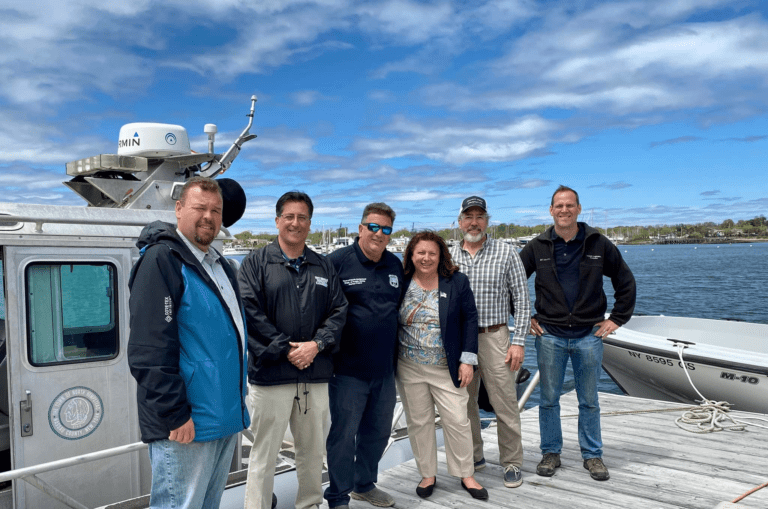
To aid the local ecosystem, the Town of North Hempstead has passed a resolution for a pilot oyster restoration project in Manhasset Bay.
Mariann Dalimonte, a North Hempstead council member, introduced the resolution at the Town Board meeting April 28.
The program is being run in partnership with the Cornell Cooperative Extension of Suffolk County, which has extensive experience with shellfish restoration on Long Island.
“It’s imperative that government leaders do all they can to enhance our green spaces and create healthier ecosystems,” she said. “Manhasset Bay is a precious resource for every single resident in the Town of North Hempstead.”
As the bay has faced challenges, so has its oyster population. While the precise cause is unknown, Lorne Brousseau, associate marine program director for the Cornell Cooperative, believes it could be because of several factors.
“You’ve probably heard of algal blooms and stuff like that,” he said. “So some of those blooms can really harm the oysters. It’s over many years that the population has gone way down to what it historically was.”
Besides supplying food, oysters provide substantial benefits through purifying water by filter feeding. A single adult oyster may filter up to 50 gallons of water every day.
“It doesn’t mean you just throw in a couple of thousand oysters and suddenly you have a pristine bay,” Brousseau said. “It’s something that will take time over many, many years, even decades. But if you get the oyster populations back, it will impact the long-term impact on the water quality.”
He said that putting one million oysters into the bay requires extensive planning. First, a permit from the Department of Environmental Conservation is required.
Then there’s the matter of deciding where to put the oysters. Brousseau explained that finding a site requires meeting all the conditions for them to not just survive but thrive.
“We’re looking for sites that have the right bottom type, which is basically a sandy bottom,” he said. “You don’t want muddy or silty bottoms because they’ll sort of just sink in, suffocate and die. So we want sandy sites.”
Other factors are regions where the oysters can avoid humans and elemental conflict, to name a few. They’ve selected three locations thus far.
“I love oysters, but when I go to eat them now, I look at it so differently,” said Dalimonte. “I know that those are safe to eat. [The ones being planted] will not be, but you just look at things so differently.”
In particular, these oysters will be spat. These are oyster larvae that have attached themselves to a surface, such as other oyster shells, which grow into dense clusters known as oyster reefs or beds.
Apart from being required to receive a permit, these clusters are also undesirable. According to Brousseau, this makes them less likely to be tampered with.
“If they’re single oysters that restaurants want, then it’d be too much of an attraction for someone to poach them, take them, try to sell them or eat them and possibly get sick,” he said. “The waters in Manhasset Bay are closed to shellfishing.”
Planting will begin in the summer or fall of 2022 and monitoring for growth and survival will begin in early 2023. This trial program’s time scale, assuming it is expanded, could take decades before tangible outcomes are decisively clear.
“We don’t want people or municipalities going into this thinking that they do this for a couple of years, put some oysters out, then they’re going to have a beautiful, pristine bay,” Brousseau said. “It doesn’t work that way.”
He explained that improving the water quality, which is already occurring, will take time. Oysters, he hopes, will speed up the process even more.
Dalimonte said she has been pushing for this project since 2020. To see it realized is a dream come true for her.
“I will ask if I could put the first oyster in the bay because this is so important to me and the community,” she said. “I’ve worked so hard for all the residents, whether or not they voted for me. I’ve worked so hard for every constituent that’s in the 6th District and I know that this is something that everyone is so excited about.”






